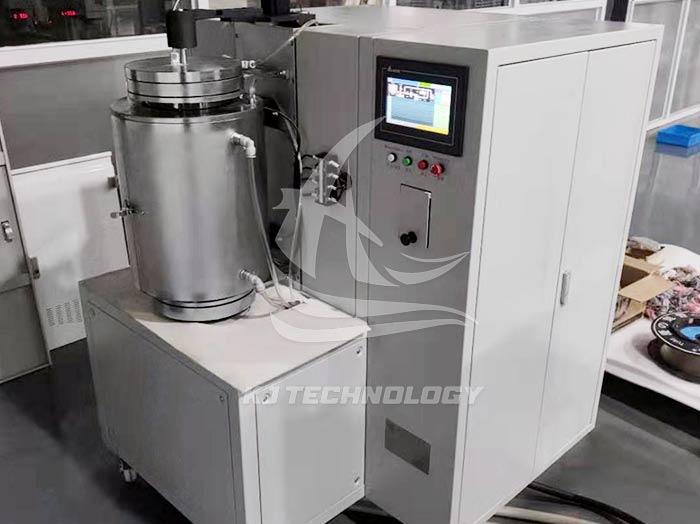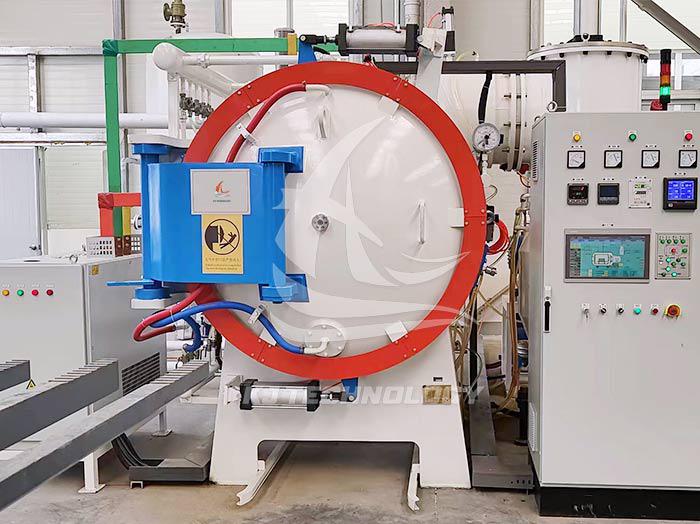What gas is used in a vacuum quenching furnace?
 11-10-2025 Author: KJ technology
11-10-2025 Author: KJ technology
Vacuum gas quenching furnaces usually introduce inert gases such as nitrogen (N ₂), argon (Ar), or a mixture of both during the quenching process, and in some cases helium (He) may also be used. The specific choice depends on material characteristics, process requirements, and cost considerations. The following is a detailed explanation:
1. Nitrogen (N ₂)
Features:
Low cost: Nitrogen is the most abundant gas in the air (about 78%), with low acquisition cost and suitable for large-scale production.
Medium cooling capacity: The thermal conductivity and specific heat capacity of nitrogen are moderate, and the cooling rate is between argon and helium.
Possible formation of nitrides: At high temperatures, nitrogen may react with certain metals (such as titanium and aluminum) to form nitrides, affecting material properties.
Applicable scenarios:
Ordinary carbon steel and alloy steel: Nitrogen quenching can meet the hardness requirements and has low cost.
Materials insensitive to nitrides, such as some stainless steels and tool steels.
2. Argon (Ar)
Features:
Strong chemical inertness: Argon hardly reacts with any metals, completely avoiding oxidation and nitriding problems.
Weak cooling capacity: The thermal conductivity and specific heat capacity of argon gas are low, and the cooling rate is slow, which needs to be compensated by increasing pressure or flow rate.
High cost: Argon is a rare gas, and its acquisition cost is higher than that of nitrogen.
Applicable scenarios:
Titanium alloys and high-temperature alloys: avoid the formation of nitrides and maintain material purity.
Precision parts, such as aerospace engine blades and turbine disks, require strict control of tissue uniformity.
Active metals such as aluminum and magnesium prevent oxidation and combustion.
3. Helium (He)
Features:
Extremely strong cooling capacity: Helium has a much higher thermal conductivity and specific heat capacity than nitrogen and argon, and has the fastest cooling rate.
Extremely high cost: Helium is a rare gas, difficult to extract, and expensive.
May cause hydrogen embrittlement: Under extreme conditions, helium gas may infiltrate the metal lattice, leading to hydrogen embrittlement (but the risk is lower in vacuum gas quenching furnaces).
Applicable scenarios:
Ultra thin wall components: such as precision electronic components, require rapid cooling to prevent deformation.
High thermal conductivity materials such as copper and aluminum require efficient heat dissipation.
Special process requirements: such as rapid solidification technology, requiring extremely fast cooling speed.
4. Mixed gas
Features:
Comprehensive performance optimization: By mixing nitrogen, argon, or helium, cooling rate, cost, and chemical inertness can be balanced.
Process flexibility: Adjust the gas ratio according to material requirements to achieve the best quenching effect.
Applicable scenarios:
Complex material systems: When processing both titanium alloys and stainless steel simultaneously, it is necessary to balance nitride control and cooling efficiency.
Cost sensitive production: Reduce the amount of helium or argon gas used by mixing gases to control costs.
Gas selection principle
Material compatibility:
Titanium alloys and high-temperature alloys are preferred to use argon or mixed gases (avoiding nitrides).
Ordinary carbon steel and alloy steel can choose nitrogen gas (low cost).
Cooling speed requirement:
Ultra thin wall parts or high thermal conductivity materials should be selected with helium gas or a high proportion of nitrogen gas mixture.
Select nitrogen or low proportion argon gas mixture for ordinary parts.
Cost considerations:
Prioritize nitrogen for large-scale production.
Precision or high value-added parts can accept the cost of argon or helium gas.
Typical application cases
Aerospace engine blades:
Gas: High purity argon gas.
Reason: To avoid the formation of nitrides and maintain the high-temperature strength and fatigue life of the blades.
Automotive gears:
Gas: Nitrogen (99.5%) or a mixture of nitrogen and argon (nitrogen accounts for 70%~80%).
Reason: Balancing cooling speed and cost to meet gear hardness requirements.
3D printing of titanium alloy parts:
Gas: argon helium mixed gas (argon accounts for 90%, helium accounts for 10%).
Reason: Rapid cooling prevents thermal stress cracking while avoiding nitrides.








